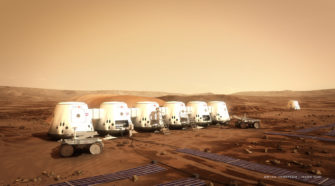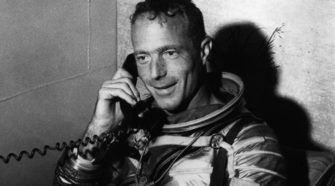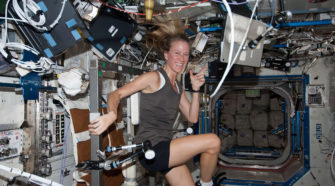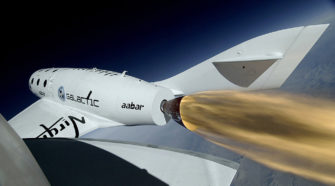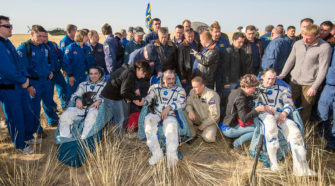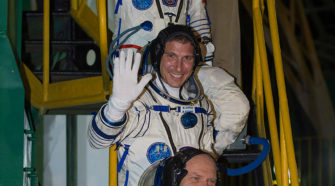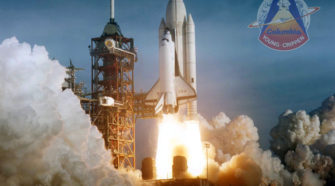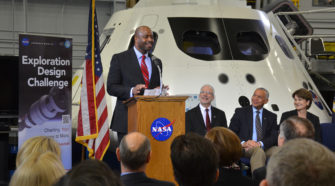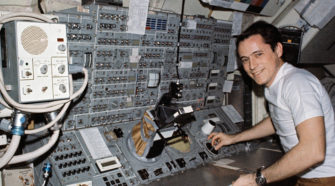Human Spaceflight
Mars One betting colonizing planet will be great television
Mars One is a non-profit foundation, co-founded by Bas Lansdorp and Arno Wielders, to establish a human presence on Mars. The prime difference Mars One has over similar peer programs is its unique strategy; this is a one way ticket for a permanent “homesteading” community in an apolitical and international long term plan, thus removing …
Scott Carpenter: A tribute to a curious but ordinary superman
One of only two remaining Mercury Program Astronauts from the 60’s, Scott Carpenter, sadly passed beyond the veil on Thursday, October 10, 2013 following a stroke in September. He was 88 years of age. Carpenter was one of the earliest pioneers in the infancy of the Space Age. He was the second American to cross …
Importance of exercise while in orbit
Human space flight is a physically demanding experience. It poses numerous risks, many of them are very evident, but some are hidden to the naked eye. The most important hidden health challenge is the bone density changes that are brought on by prolonged weightlessness. These bone density changes in the hip and back are very …
Spacefest V: The ultimate party for space lovers
Recollections of Spacefest V “The past is prologue” as I once heard. A once politicised and technology based race to the Moon has yielded innumerable spin-off benefits and technology, but has also served as a prologue to many other events. The birth and rise of the new commercial space industry. International Space Agency cooperation with …
Can SpaceShipTwo fly up to space?
Vocabulary • Parabola: The graph of a quadratic equation, which for this project is in the shape of an upside-down capital “U” • Quadratic Equation: The equation that creates a parabola when graphed • Vertex: The maximum (or Minimum) point on a parabola Narrative If a baseball is thrown into the air to another ball …
Landing of Expedition 36
Expedition 36 Soyuz landing – The Soyuz TMA-08M spacecraft with Expedition 36 Commander Pavel Vinogradov, Flight Engineer Alexander Misurkin and Flight Engineer Chris Cassidy (sitting far left) landed in a remote area of Kazakhstan on Sept. 11. They returned to Earth after five and a half months serving aboard the International Space Station. This article appeared …
Launch of Expedition 37 to ISS
Expedition 37 launch – The Soyuz TMA-10M rocket launched from the Baikonur Cosmodrome in Kazakhstan on Sept. 26, carrying Soyuz Commander Oleg Kotov, NASA Flight Engineer Michael Hopkins (left, middle) and Russian Flight Engineer Sergei Ryazansky to the ISS. Their Soyuz rocket launched at 2:58 a.m. local time. This article appeared in the 3rd issue of …
Columbia STS-1 Launch
April 12, 1981: Space Shuttle Columbia launched this day from the LC-39A pad at Kennedy Space Center in Florida. The STS-1 mission lasted just two days, circling the Earth 37 times, before landing at Edwards Air Force Base in California. Columbia carried a crew of two – mission commander John W. Young and pilot Robert …
Contest challenges students to design new radiation shield
NASA is challenging school-children to protect their future ride into space. The agency’s Exploration Design Challenge (EDC), announced March 11 during an event at the Johnson Space Center in Houston, engages U.S. students in kindergarten through high school in helping to solve the known problem of increased radiation exposure encountered on flights into deep space. …
A conversation with Skylab 4 astronaut Ed Gibson
America’s first space station, Skylab was launched into orbit on a Saturn V rocket in May of 1973. Three manned missions to the outpost were immensely successful. Repairs made to the orbital station during several spacewalks ultimately proved that it was possible for astronauts to conduct work in outer space, which gave NASA the confidence …

